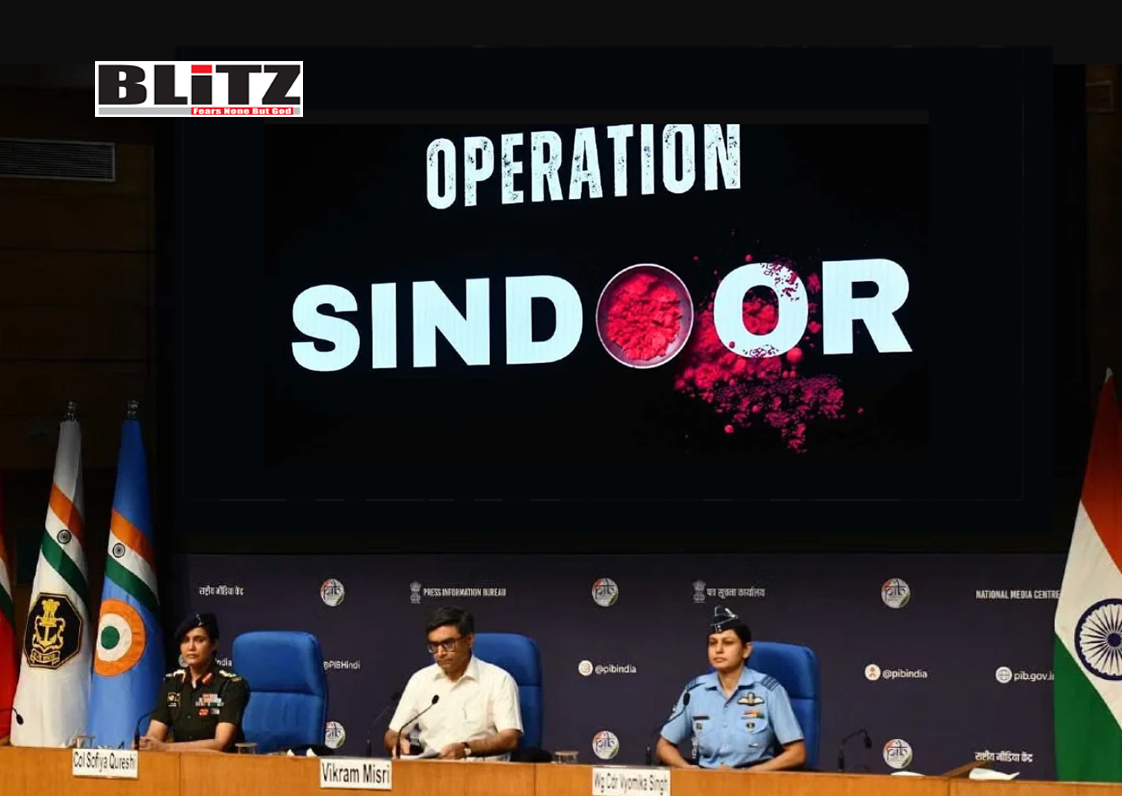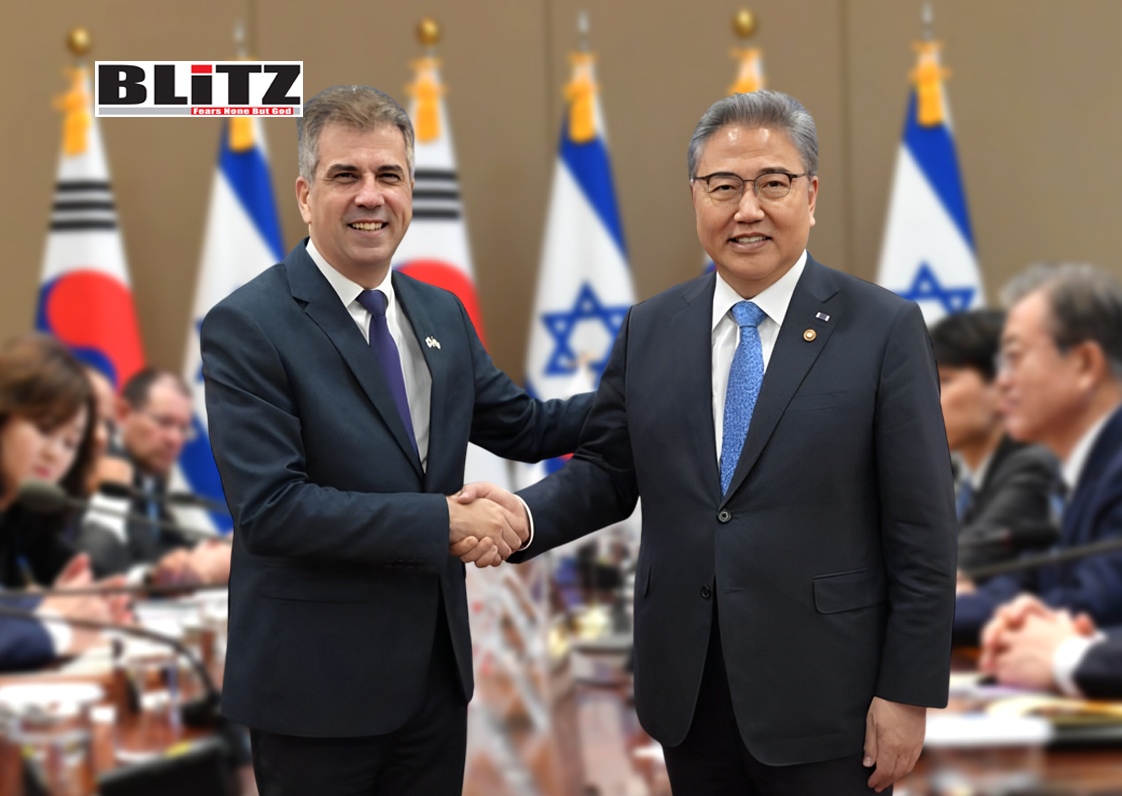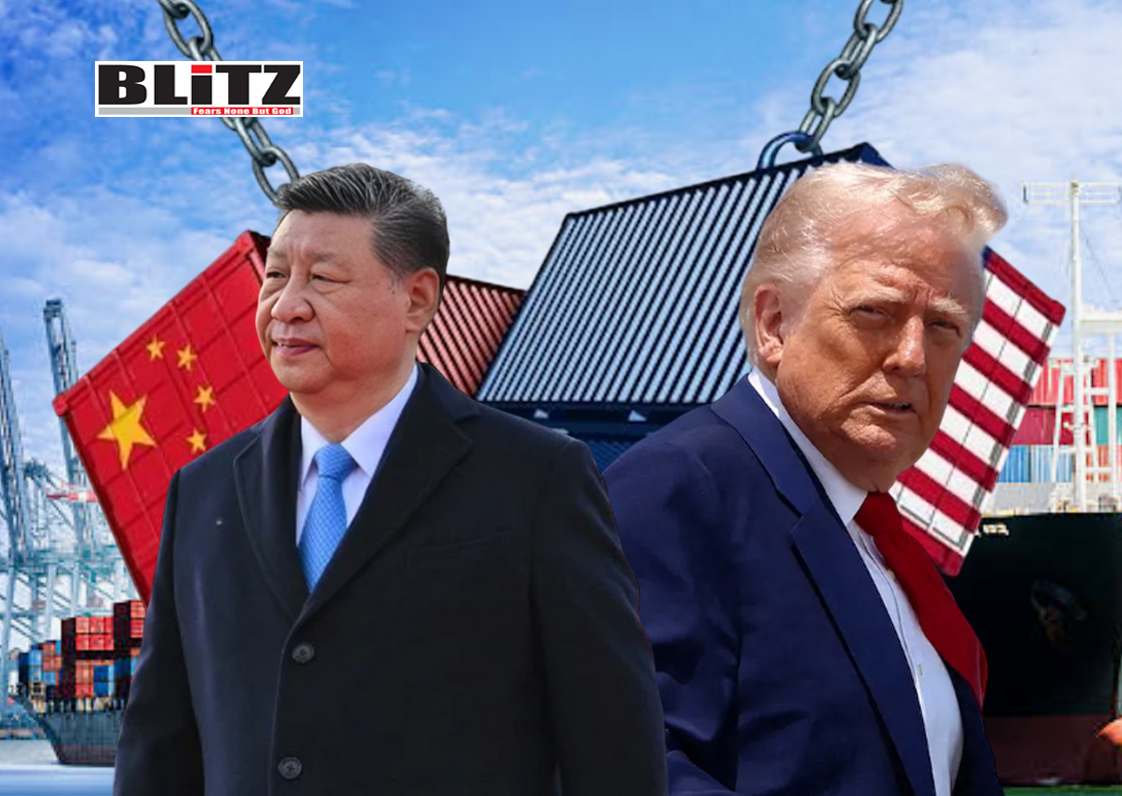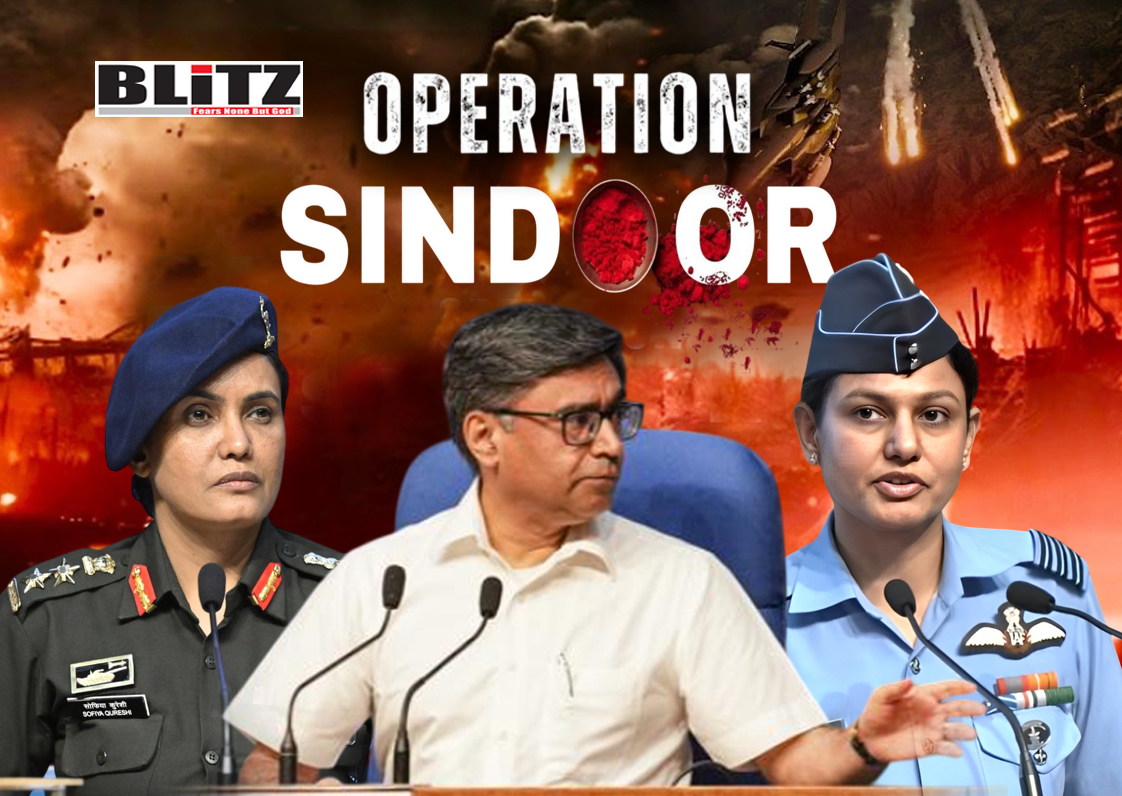Operation Sindoor: Redefining India’s Strategic Posture and Counter-Terrorism Strategy
- Update Time : Friday, May 9, 2025

The operation, under Prime Minister Modi’s leadership, sends a clear and unequivocal message that cross-border terrorism will not be tolerated and those responsible—whether state or non-state actors—will face tangible costs. The long-standing paradigm of nuclear coercion has been dismantled and replaced with assertiveness and clarity.
India’s recent precision strikes on Pakistan on April 26, 2025, under the codename Operation Sindoor, have sent an unequivocal message: there will be a cost for any misadventure against India. Just days before the strike, Prime Minister Narendra Modi, addressing an election rally in Bihar, had clearly stated, “We will pursue them to the ends of the earth. We will identify, track, and punish every terrorist and their backers beyond their imagination.” This operation demonstrated the resolve behind those words. Unlike previous responses, the Indian armed forces not only targeted terrorist infrastructure in Pakistan-occupied Kashmir (PoK) but also struck deep inside Pakistan’s Punjab province — all while carefully avoiding direct strikes on the Pakistan Army. Officially defined as a “focused, measured, and non-escalatory” action, the operation signalled a new threshold in India’s counter-terrorism strategy.
This calibrated action conveyed a sharp warning: persistent support for terrorism could bring the Pakistani military establishment into India’s crosshairs next. By blending measured restraint with unparalleled precision, Operation Sindoorsignalled a recalibrated strategy of credible deterrence and strategic assertiveness.
Operation Sindoor: A Defining Moment in India’s Counter-Terrorism Strategy
Following the strike, India’s Ministry of External Affairs stated that the operation targeted terrorist infrastructure responsible for the April 22 Pahalgam attack, based on credible intelligence. The strikes were conducted carefully to avoid civilian and military casualties. Reaffirming India’s stance, the statement declared, “India will take all necessary measures to defend its citizens against cross-border terrorism.” New Delhi also urged Pakistan to dismantle terror networks and warned of further action if provocations persist.
The April 22 Pahalgam terror attack in Jammu & Kashmir, which killed 26 civilians (mostly Hindu tourists), prompted the operation. People of Jammu and Kashmir, weary of decades of violence and bloodshed, were striving for normalcy and economic stability. The attack not only killed innocents but also tarnished the reputation of Kashmiris, known for their hospitality. A local Kashmiri lost his life heroically attempting to disarm one of the terrorists.As Foreign Secretary VikramMisri later stated, “This attack was not just an assault on innocents, but an attempt to fracture the peace and communal harmony in Kashmir.”His statement underscores that the intent behind the attack extended beyond mere disruption of peace — it sought to undermine the broader fabric of social cohesion and stability in the region.
The name “Sindoor” for this operation was chosen to honor the widows of the Pahalgam terror attack victims. In Hindu tradition, sindoor symbolizes a woman’s marital status, and its use is closely tied to the identity of married women. The poignant choice of this name reflects the profound loss experienced by 25 women who were widowed in the attack. Prime Minister Narendra Modi personally selected the name as a tribute to the victims and their families.
The operation, conducted between 1:05 a.m. and 1:30 a.m. on May 6, 2025, was a meticulously coordinated strike by the Indian Armed Forces aimed at dismantling terror infrastructure, launching pads, and indoctrination centers linked to groups such as Lashkar-e-Taiba and Jaish-e-Mohammed. Based on credible intelligence, the operation targeted nine sites across Pakistan-administered Kashmir and deep inside Pakistan, including Bahawalpur, Muridke, Tehra Kalan, Sialkot, Bhimber, Kotli, and Muzaffarabad. All designated targets were hit with precision and a zero failure rate, sending a clear message to Pakistan’s establishment about India’s robust intelligence penetration and strike capabilities. Among the significant outcomes was the elimination of key terrorist figures: ten members of Jaish-e-Mohammed chief Masood Azhar’s extended family were killed in airstrikes on the group’s headquarters in Bahawalpur, along with four of Azhar’s close associates. These actions underscore the operation’s effectiveness in targeting high-value individuals within terrorist organizations.
A diverse arsenal of precision weapons was employed during Operation Sindoor, including SCALP missiles and AASM Hammer bombs launched from Rafale fighter jets. These advanced weapons enabled strikes on targets up to 500 km away without breaching Pakistani airspace, showcasing India’s strategic planning and technological superiority. The selection of weapons was carefully tailored to specific targets, enhancing the operation’s effectiveness. This precision also exposed Pakistan’s false claims of shooting down five Indian jets, as no such evidence was corroborated. In fact, Pakistan’s air defense systems failed to intercept the incoming strikes, further highlighting the superiority of Indian weapon systems. Operation Sindoor was executed by all three branches of the Indian Armed Forces — Army, Navy, and Air Force — demonstrating seamless coordination and joint operational strength. As Colonel Sophia Qureshi emphasized during a joint press briefing with Wing Commander Vyomika Singh, “This operation stands as proof of India’s ability to strike hard, strike fast, and strike together.”
Beyond its immediate tactical success, Operation Sindoor conveyed a decisive strategic message. India delivered a strong signal of deterrence to the Pakistan Army: any future misadventure will carry escalatory costs that Pakistan cannot easily bear. By striking deep into Pakistani territory, India demonstrated that no target is beyond its reach and that future provocations will invite serious consequences. Pakistan’s fragile economy, heavily reliant on international bailouts, limits its ability to initiate or sustain conflict. Reflecting this, immediately after the crisis, Pakistani leader Khawaja Asif stated, “If India is willing to de-escalate, we are willing to wrap up tensions.” Moreover, today, the NSAs of both countries held talks to ease tensions. Unlike nations with robust military-industrial bases, Pakistan’s economic strain compels quick conciliatory rhetoric to avoid escalation.
The message to Pakistan-backed operatives in Kashmir was also clear: if India can strike deep inside Pakistan with near-perfect accuracy, neutralizing local terror elements would be even easier. The operation’s precision and reach delivered an unmistakable warning, with a significant psychological impact on terror networks.
Strategic Shift under Modi: Eroding Nuclear Blackmail and Redefining Escalation Dynamics
Importantly, this decisive posture marks a clear departure from the cautious strategic approach of the past. Under Narendra Modi’s leadership, New Delhi has significantly reshaped the dynamics of India-Pakistan relations. The era of prolonged debates and nuclear blackmail following terror attacks is over.Prior to Modi’s tenure, there was widespread fear in India’s political establishment regarding Pakistan’s nuclear deterrence. This fear stemmed from the belief that any Indian military action could provoke a nuclear response from Pakistan. Pakistan had long used its nuclear capabilities to intimidate India, particularly after each terror attack.
Modi has demonstrated unwavering political will and determination to impose costs on Pakistan for its support of terrorism. Previously, debates would dominate TV shows, and after each terror attack, Pakistan would play its nuclear card, leading to temporary de-escalation. But Modi has consistently shown that there will be consequences for Pakistan’s actions. He has called out Pakistan’s nuclear bluff and blackmail repeatedly, making it clear that India’s resolve is firm.
Moreover, Modi’s strategic approach is marked by an element of surprise and deception. For instance, the announcement of a mock drill prior to Operation Sindoor diverted Pakistan’s attention, only for the actual strikes to occur at night, catching Pakistan off guard. This unpredictability is a hallmark of Modi’s strategic leadership, keeping adversaries guessing and ensuring that they are never prepared for India’s next move.Through his actions, Modi has imposed a clear message on Pakistan: if you continue to perpetrate terrorism against India, you will face serious consequences. His leadership has fundamentally altered the calculus of India-Pakistan relations, ensuring that India will no longer be a passive observer of Pakistan’s provocations.
Conclusion
Operation Sindoor stands as a testament to India’s strategic clarity, military prowess, and political determination to defend its national interests—unambiguously and decisively.The operation sends a clear and unequivocal message: cross-border terrorism will not be tolerated, and those responsible—whether state or non-state actors—will face tangible costs. Prime Minister Modi’s leadership has effectively dismantled the long-standing paradigm of nuclear coercion, replacing hesitation with assertiveness and ambiguity with clarity. The integration of intelligence, advanced military assets, and seamless tri-services coordination highlights India’s growing defense maturity and operational readiness. Most importantly, Operation Sindoor reinforces India’s commitment to protecting its citizens, preserving regional stability, and deterring future aggression. It stands as a watershed moment that not only redefines the contours of India-Pakistan relations but also reshapes the strategic landscape of South Asia.













Leave a Reply